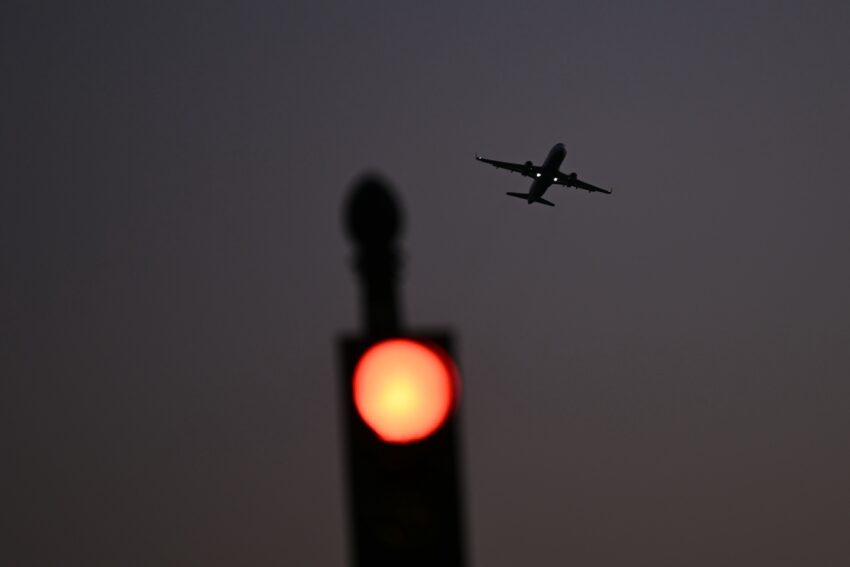
the government shutdown is strangling aviation The ongoing federal government shutdown is significantly impacting the aviation sector, leading to widespread flight delays and operational challenges.
the government shutdown is strangling aviation
Overview of the Shutdown’s Impact on Aviation
The federal government shutdown, which began on October 1, 2025, has sent shockwaves through the U.S. aviation industry. As reported by The Verge, the situation has escalated to a point where more than 6,000 flights are being delayed daily, nearly double the historical average for this time of year. This disruption is not merely a temporary inconvenience; it reflects deeper vulnerabilities within the aviation system that have been highlighted in recent months.
Historical Context of Aviation Vulnerabilities
In May 2025, The Verge noted that the U.S. aviation system was particularly fragile, with even minor disruptions capable of causing widespread chaos. This fragility has been exacerbated by the current government shutdown, which has introduced a level of uncertainty and operational strain that many airports and airlines are ill-equipped to handle. The shutdown has not only affected flight schedules but has also raised concerns about the overall safety and efficiency of air travel.
Flight Delays and Operational Challenges
According to statistics from the Department of Transportation, the daily average of delayed flights has surged to over 6,000. This figure is alarming, especially when considering that October typically sees a more stable air travel environment. The delays are attributed to several factors, including staffing shortages at the Transportation Security Administration (TSA) and air traffic control disruptions.
Staffing Shortages at TSA
The TSA has been particularly hard-hit by the shutdown. With many employees either furloughed or working without pay, the agency has warned travelers to expect longer security lines at airports. The TSA has also ceased updating real-time checkpoint information on its MyTSA app, leaving travelers without crucial information regarding wait times and security procedures.
This lack of communication has further compounded the frustration for passengers, many of whom rely on the app for timely updates. The situation has led to longer wait times at security checkpoints, which in turn has caused cascading delays throughout the airport system. Travelers have reported waiting in line for hours, only to find their flights delayed or canceled altogether.
Air Traffic Control Challenges
In addition to TSA staffing issues, some major airports have been forced to operate without air traffic control for extended periods. This situation poses significant safety risks, as air traffic controllers play a crucial role in managing the flow of air traffic and ensuring safe landings and takeoffs. The absence of air traffic control can lead to increased congestion in the skies and on the ground, further exacerbating delays.
Airlines have been forced to adapt to these challenges by implementing contingency plans, which often include canceling flights or rerouting aircraft. However, these measures can only go so far in alleviating the chaos that has ensued since the shutdown began.
Stakeholder Reactions
The reactions from various stakeholders in the aviation industry have been mixed, with many expressing frustration over the government’s inability to resolve the budget dispute. Airlines, airport authorities, and passenger advocacy groups have all voiced concerns about the impact of the shutdown on air travel.
Airlines’ Perspective
Airlines have been particularly vocal about the challenges they face due to the shutdown. Many have called for urgent action from lawmakers to end the impasse and restore normal operations. Airlines argue that the ongoing delays and cancellations not only affect their bottom line but also damage their reputation and customer trust.
In a statement, a major airline representative emphasized the importance of stable government operations for the aviation sector. “We rely on the federal government to provide essential services that keep our skies safe and our passengers moving,” they said. “The current situation is untenable, and we urge Congress to come together and find a solution.” This sentiment is echoed across the industry, as airlines grapple with the fallout from the shutdown.
Airport Authorities’ Concerns
Airport authorities have also expressed their concerns regarding the shutdown’s impact on operations. Many airports have reported increased congestion and longer wait times, which can deter travelers from flying altogether. This could have long-term implications for air travel demand, especially as the holiday season approaches.
One airport director noted, “We are doing everything we can to manage the situation, but the reality is that we are operating under unprecedented conditions. Our staff is working tirelessly, but without federal support, we are limited in what we can do.” This statement highlights the interconnectedness of the aviation ecosystem and the reliance on federal agencies for smooth operations.
Passenger Advocacy Groups
Passenger advocacy groups have also weighed in on the situation, emphasizing the need for transparency and accountability from both the government and the aviation industry. They argue that travelers deserve to know what is happening with their flights and what steps are being taken to mitigate delays.
A representative from a prominent passenger advocacy organization stated, “Travelers are frustrated and anxious. They deserve clear communication and support during this challenging time.” This call for transparency underscores the importance of keeping passengers informed and engaged, especially when disruptions occur.
Broader Implications of the Shutdown
The implications of the government shutdown extend beyond immediate flight delays and operational challenges. The aviation sector is a critical component of the U.S. economy, contributing billions of dollars and supporting millions of jobs. Prolonged disruptions could have far-reaching consequences for economic growth and job stability.
Economic Impact
The aviation industry is a significant driver of economic activity, and disruptions can ripple through various sectors. Airlines, airports, and related businesses rely on a steady flow of travelers to sustain their operations. If the shutdown continues, it could lead to reduced consumer confidence and spending, ultimately affecting the broader economy.
Moreover, the potential for decreased air travel during the holiday season could have lasting effects on airlines’ financial performance. Many airlines rely on the holiday travel period to boost revenues, and any significant drop in passenger numbers could hinder their recovery from previous downturns.
Long-Term Safety Concerns
Beyond economic implications, the shutdown raises serious concerns about safety within the aviation sector. The absence of air traffic control and reduced TSA staffing can compromise the safety protocols that are essential for air travel. As the situation unfolds, it is crucial for federal agencies to prioritize safety and ensure that the aviation system remains secure.
Conclusion
The ongoing federal government shutdown is wreaking havoc on the U.S. aviation system, leading to unprecedented flight delays and operational challenges. With over 6,000 flights delayed daily, the situation has prompted urgent calls for action from airlines, airport authorities, and passenger advocacy groups. As the shutdown continues, the implications for the aviation industry and the broader economy remain significant, highlighting the need for a swift resolution to the budget dispute.
Source: Original report
Was this helpful?
Last Modified: October 15, 2025 at 4:36 pm
2 views














